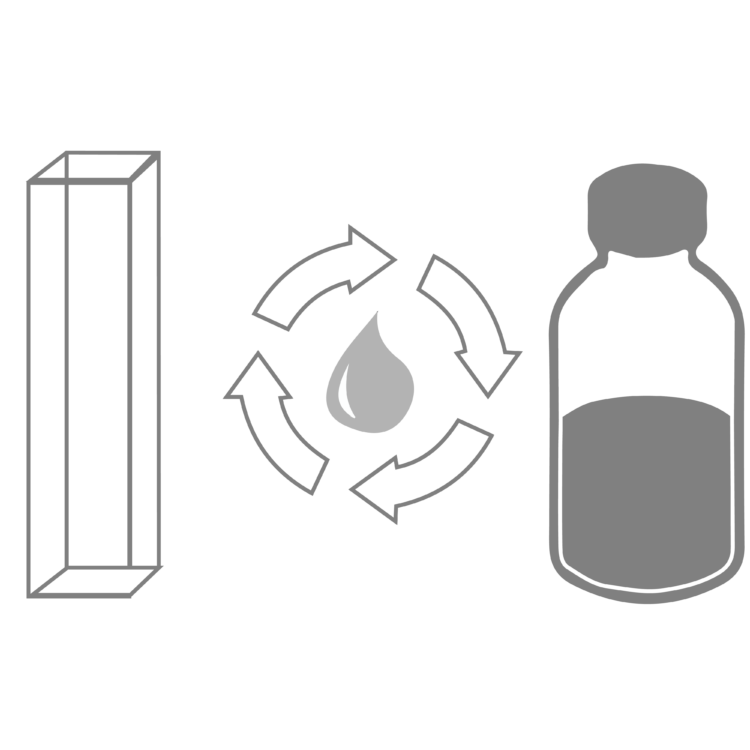The innovative optical system of the J-1500 permits the measurement of a CD spectrum in the vacuum-UV region down to 163 nm. The enhanced light throughput and new digital lock-in technology now allows for a small signal to be detected in a very noisy environment. Additionally, the optimization of the nitrogen purge efficiency helps to reduce the amount of oxygen in the optical bench so it does not bury the sample signal.
These features ensure that CD spectra can be obtained from strongly absorbing and high signal-to-noise (S/N) samples across the spectrum and into the vacuum-UV region. The quality of spectral data obtained, including data obtained at shorter wavelengths, substantially improves the accuracy of protein secondary structure analysis.
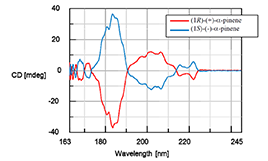
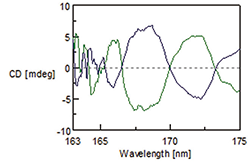
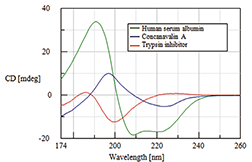
Exceptional Stray-Light Rejection
The double polarizing prism monochromators of the J-1000 series result in stray light lower than 0.0003%, enabling the instruments to obtain high-quality CD data even under conditions with high absorbances.

High Sensitivity and Wide Dynamic Range of PMT Detector
The PMT detectors used in the JASCO system are specially selected for the highest sensitivity and lowest birefringence. The wide dynamic range of the PMT detector ensures that large variations in signal intensity can still be detected, even for highly absorbing samples. The result is superior linearity between concentration and absorbance compared to other types of detectors including solid-state APD and CCD detectors.
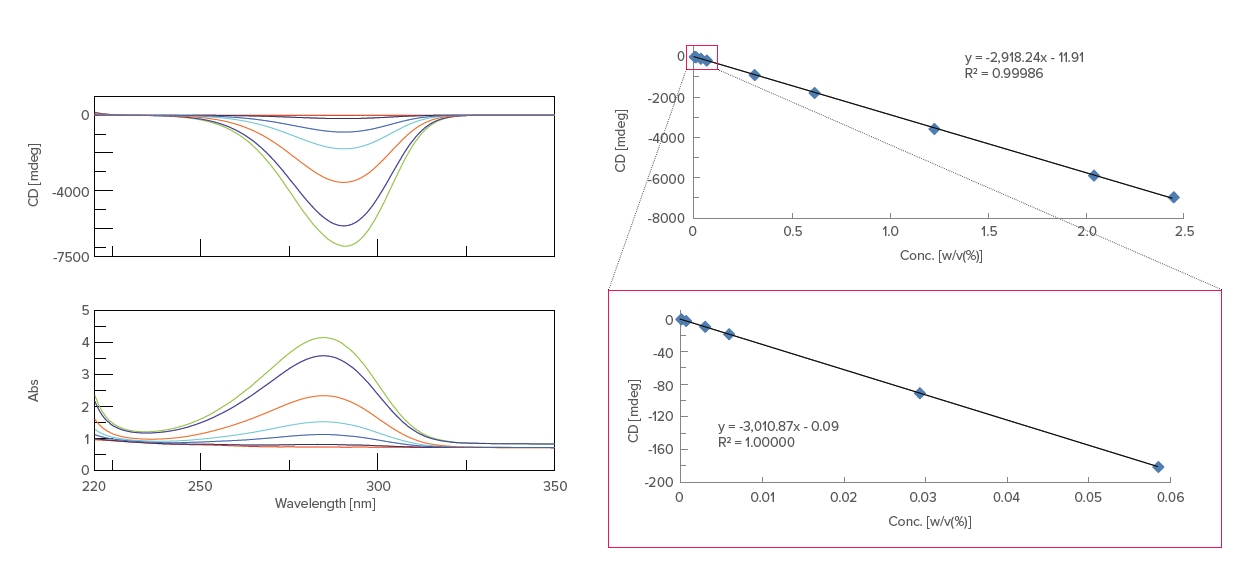
The gain on a PMT detector is much larger (107) than most detectors, and therefore the signal amplification is larger. Under conditions with adequate light intensity, this typically leads to a larger amount of noise and therefore a lower S/N ratio. However, under conditions where there is a small amount of light hitting the detector (i.e. far-UV region), the gain of the PMT allows for good signal amplification at very low noise, increasing the S/N ratio.
Rapid Scanning
High sensitivity combined with a 10,000 nm-per-minute maximum scan speed allows the J-1500 to measure samples quickly, increasing productivity in your lab. An additional benefit is the minimal time exposure of biological samples to the high-energy UV light, minimizing the risk of sample degradation. A mechanical shutter can also be programmed to open and close only during actual measurement to further avoid UV exposure.
Highest S/N Performance
The high S/N (signal-to-noise) performance of the J-1000 series is achieved by a high throughput optical system and low-noise signal processing. RMS Noise < 0.004 mdeg (185 nm) for the J-1500 and J-1700, < 0.03 mdeg (200 nm) for J-1100.
Simultaneous Multi-Probe Measurements
The latest quad-channel lock-in amplifier provides simultaneous acquisition of up to four data channels including CD, HT, DC, absorbance, linear dichroism (LD), fluorescence, fluorescence-detected CD (FDCD), fluorescence-detected LD (FDLD) and fluorescence anisotropy.
Additionally, the lock-in amplifier obtains a signal at a specific resonance frequency while filtering out noise signals at other frequencies, providing spectra with excellent signal-to-noise ratios.


